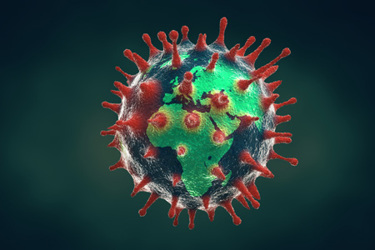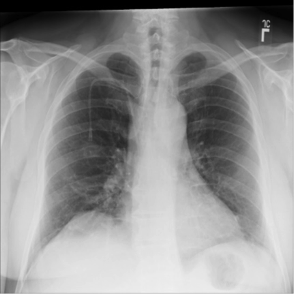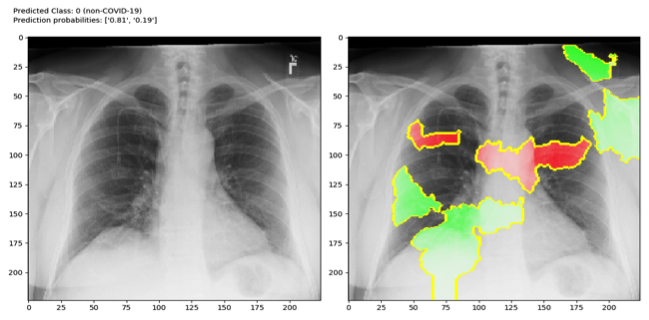The Role Of AI In Mitigating COVID-19 Confusion
By Balaji Karumanchi

Much like the pandemic itself, debates surrounding the medical nature of the coronavirus (COVID-19) continue to fester, with much media fanfare. From the clinical conjecture regarding when it might be safe to re-open states across the country to when and where people should be donning facemasks in public, the dichotomy of opinions has been intense and anxiety-inducing. Also, one other COVID-related conversation centers around the discussion of whether the infection is caused by a virus or bacteria. While most evidence does in fact support the notion that the coronavirus is indeed the result of a viral infection, notably, reports have surfaced that claim Italian researchers and healthcare providers have uncovered evidence that suggests bacterial roots to COVID-19.1-3 Attempts to prove that the family of coronaviruses are not bacteria date back to as early as 2005, when authors studied the presence of severe acute respiratory syndrome (SARS) as caused by a coronavirus, signaling that while the virus vs. bacteria discussion, while underplayed, is not novel.
All debates aside, determining disease etiology is important for many reasons, including the impact of diagnostic methods and treatment options. Whether speculation that COVID-19 could be affiliated with bacterial, or even fungal, infection persists, the emergence of deep machine learning and artificial intelligence (AI) technology could leave its footprint on aiding healthcare experts in controlling the spread of coronavirus and in concluding the debate of virus vs. bacteria.
Deep Learning And COVID Diagnostics And Care
Deep learning and AI are active research topics in medicine and are already credited with assisting diagnoses of disease, cracking the complexity of disease-causing microbes, and finding potential cures.
Machine learning has been used in many aspects of microbiology research, especially for exploring interactions between microorganisms and environments. Multiple applications of machine learning for disease-related microRNA identification and disease-related long non-coding RNA identification also have been utilized. Researchers also have proposed tools for predicting double-stranded DNA bacteriophage sequences in metagenomics and algorithms for classification of diseases and disease-causing microbes.4-6
As the technology evolves, AI could benefit healthcare by functioning alongside physicians and to help ensure error-free results, particularly by reducing misdiagnoses with the help of an ML accuracy validation methodology. The market is likely to see a change in working methods of physicians, economic change, political change impact on healthcare, and medicine due to AI technology, including when it comes to many aspects associated with COVID-19.
Perhaps most significantly involving COVID-19, as primarily a respiratory-related malady, experts have employed deep learning algorithms for detection of COVID using images of CT scans.


Yet, the virus has shown that it can diversely affect patients of all ages. For example, many patients have developed kidney disease, heart disease, and/or lung disease after a positive COVID test result. It is also possible that COVID-19 has mutated since its origin, which is also said to be hindering the development of effective treatments.
Impact Of Deep Convolutional Neural Network And Res-Net

Deep Convolutional Neural Network (DCNN) models are trending classifiers for chest X-ray patterns, recognition, and classification, and may be composed of ResNet-50 and ResNet-101 networks. By identifying and classifying the trends among CT scans of COVID-19 inpatients, pneumonia patients, and non-patients, healthcare professionals can conclude something worthwhile.
DCNN typically contains two different types of alternating layers, convolutional and pooling. The depth of each filter increases from left to right in the network. The last stage is typically made of one or more fully connected layers. (A typical DCNN is shown in Figure 1.) DCNNs have been used extensively in medicine and healthcare, and during the current pandemic, researchers have cracked the structure of virus genomes with the assistance of AI. ResNet-50 is a DCNN that is 50 layers deep. ResNet, short for “residual networks,” is a classic neural network used as a backbone for many computer vision tasks. This model was the winner of ImageNet Challenge in 2015, and a fundamental breakthrough with ResNet was that it successfully allows us to train extremely deep neural networks with more than 150 layers. There is also a 152-layered variant known as ResNet152. Similarly, ResNet101 has 101 layers. Study results have been reported on AlexNet, VGG-16, VGG-19, SqueezeNet, GoogleNet, MobileNet-V2, ResNet-18, ResNet-50, ResNet-101, and Xception, with ResNet-101 and Xception said to have provided the best results. AI-based research also has produced datasets of CT images among patients for detection of COVID-19 using CT scans, as well as to classify signs of COVID-19 scans from scans of other respiratory diseases.
The Future Of AI And Healthcare
The continued utilization of deep learning and AI in patient care and the study of COVID-19 and other respiratory diseases is expected to impact and quicken the potential for treatments, cures, and vaccines. For example, researchers are said to be examining the SARS vaccine for potential effectiveness against COVID-19. The use of AI for this purpose will likely help to produce a vaccine with fewer side effects more quickly. Additionally, experts have studied data in an attempt to predict the pandemic’s continued spread. Such results also can assist in governmental mandates to control the spread of COVID and to raise awareness for public prevention. From the scientific side, traditional methods of examination and detection of virus and bacteria microorganisms will increasingly be conducted with devices that can produce high-resolution photos of early, sometimes on demand, and use machine learning-based methods for detection of microbes given the efficiency at which AI can identify patterns and relationships between variables. It is already being proven that different AI algorithms can be beneficial for the actual diagnosing and treating of certain diseases, including COVID.
Fighting The Spread Of The Disease
Despite some researchers proposing that COVID-19 is a bacterial infection, it has been well documented that this is a viral infection. As the global pandemic has evolved, 100 percent accuracy in terms of prevention, diagnosis, and treatment remains out of reach. However, AI and deep learning will be utilized to fight the spread in various ways. Moreover, AI is being used to find the potential number of COVID-19 patients in the world. And as AI’s clinical involvement continues to escalate, so too will its benefits for identifying relevant research as more knowledge is gained. The COVID-19 literature is also growing along with transmission and the aforementioned debates. The NIH lists more than 28,000 articles, and AI will be relied on to help researchers and clinicians sift through the literature. Advances in natural-language processing technology allow for identifying those studies that are most relevant to the user, and in some cases to extract specific findings from the results. Such tools could also help to identify solutions across multiple disciplines. If the current trends remain status quo, the versatility of AI may just be the most consistent ally in the race for COVID treatments and answers.
 About The Author
About The Author
Balaji Karumanchi, a senior software engineer at a leading cloud-based data-management company, has 12 years’ experience in agile methodologies, computer systems, enterprise applications, machine learning, and data security. He has an MBA from Wake Forest University and has patent rights on a healthcare appointment application. He holds master’s degrees in IT (software engineering) and business administration. He is certified in AWS, Azure, OCI, PMP and Python. For additional information, email: balajik1204@gmail.com
References
- Saqib M. COVID-19 is nothing but ‘disseminated intravascular coagulation’: Italian doctors. Baaghi. 2020. Accessed online: https://en.baaghitv.com/covid-19-is-nothing-but-disseminated-intravascular-coagulation-italian-doctors/
- How Italian doctors disobeyed WHO and discovered the secrets of coronavirus. JournalOnline. 2020. Accessed online: https://journal.com.ph/editorial/mysteries/how-italian-doctors-disobeyed-who-and-discovered-secrets-coronavirus
- Carsana L, Sonzogni A, Nasr A, et al. Pulmonary post-mortem findings in a series of COVID-19 cases from northern Italy: a two-centre descriptive study. The Lancet. 2020. DOI: https://doi.org/10.1016/S1473-3099(20)30434-5
- Xu L, Liang G, Liao C, Chen G-D, Chang C-C. An efficient classifier for Alzheimer’s disease genes identification. Molecules. 2018;23(12):3140.
- Xu L, Liang G, Shi S, and C. Liao. SeqSVM: a sequence-based support vector machine method for identifying antioxidant proteins. International Journal of Molecular Sciences. 2018. 19(6):1773.
- Johnson HR, Trinidad DD, Guzman S, et al. A machine learning approach for using the postmortem skin microbiome to estimate the postmortem interval. PloS one. 2016; 11(12).
